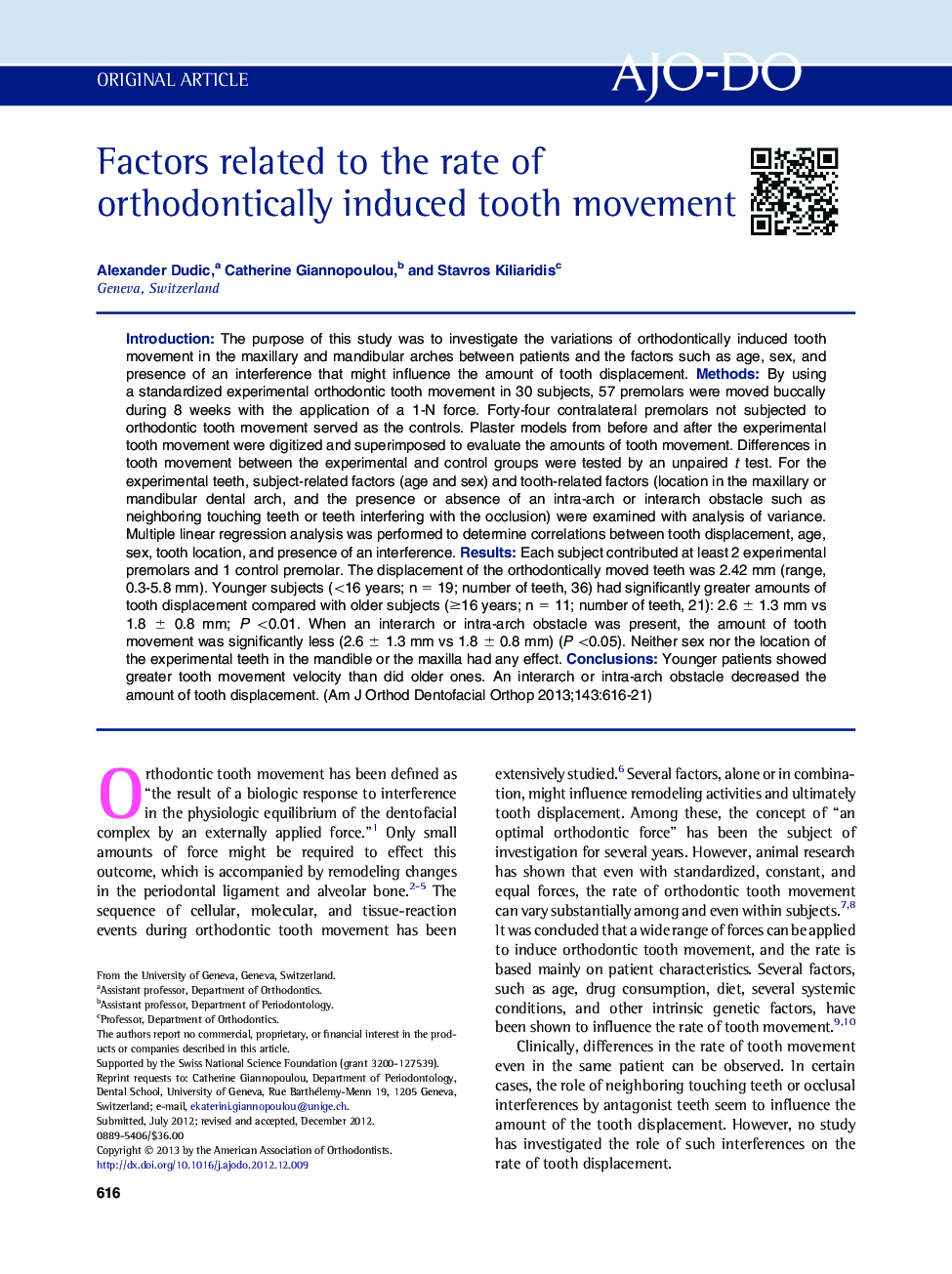| Article ID | Journal | Published Year | Pages | File Type |
|---|---|---|---|---|
| 3116611 | American Journal of Orthodontics and Dentofacial Orthopedics | 2013 | 6 Pages |
IntroductionThe purpose of this study was to investigate the variations of orthodontically induced tooth movement in the maxillary and mandibular arches between patients and the factors such as age, sex, and presence of an interference that might influence the amount of tooth displacement.MethodsBy using a standardized experimental orthodontic tooth movement in 30 subjects, 57 premolars were moved buccally during 8 weeks with the application of a 1-N force. Forty-four contralateral premolars not subjected to orthodontic tooth movement served as the controls. Plaster models from before and after the experimental tooth movement were digitized and superimposed to evaluate the amounts of tooth movement. Differences in tooth movement between the experimental and control groups were tested by an unpaired t test. For the experimental teeth, subject-related factors (age and sex) and tooth-related factors (location in the maxillary or mandibular dental arch, and the presence or absence of an intra-arch or interarch obstacle such as neighboring touching teeth or teeth interfering with the occlusion) were examined with analysis of variance. Multiple linear regression analysis was performed to determine correlations between tooth displacement, age, sex, tooth location, and presence of an interference.ResultsEach subject contributed at least 2 experimental premolars and 1 control premolar. The displacement of the orthodontically moved teeth was 2.42 mm (range, 0.3-5.8 mm). Younger subjects (<16 years; n = 19; number of teeth, 36) had significantly greater amounts of tooth displacement compared with older subjects (≥16 years; n = 11; number of teeth, 21): 2.6 ± 1.3 mm vs 1.8 ± 0.8 mm; P <0.01. When an interarch or intra-arch obstacle was present, the amount of tooth movement was significantly less (2.6 ± 1.3 mm vs 1.8 ± 0.8 mm) (P <0.05). Neither sex nor the location of the experimental teeth in the mandible or the maxilla had any effect.ConclusionsYounger patients showed greater tooth movement velocity than did older ones. An interarch or intra-arch obstacle decreased the amount of tooth displacement.
